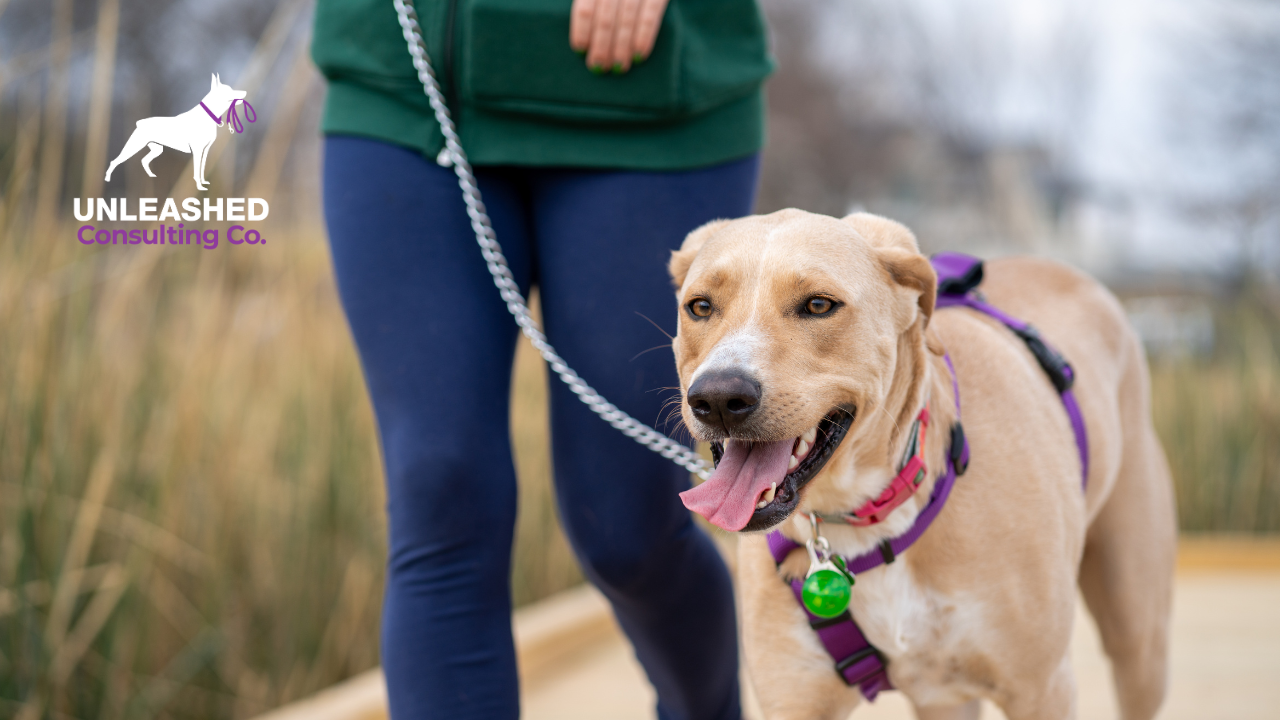Does your dog get stressed out every time you leave the house? Do you come back to find chewed furniture, hear complaints about constant barking from neighbors, or notice that your dog has had accidents while you were away?
If this sounds familiar, your furry friend might be struggling with separation anxiety.
Separation anxiety is a common issue that many dogs face. It happens when a dog becomes overly anxious or stressed when left alone. This can lead to behaviors like destructive chewing, howling or barking for hours, pacing, or even trying to escape. Not only can these behaviors be tough to manage, but they can also be signs that your dog is feeling scared and overwhelmed.
It’s important to address separation anxiety because it affects both your dog’s emotional well-being and your own peace of mind. A stressed dog can create a stressful home, making it harder to leave for work, run errands, or even enjoy time away. But here’s the good news: with the right help, this problem can be managed.
This is where a professional dog trainer comes in. Dog trainers have the skills and experience to pinpoint the root causes of separation anxiety and create a plan to help your dog feel calmer and more secure when you’re not around. In this article, we’ll explore five reasons why working with a dog trainer can make a world of difference for both you and your pup.
5 Benefits of a Dog Trainer for Dogs with Separation Anxiety
Reason 1: Expert Assessment of the Problem
When your dog is acting out while you’re away, it’s easy to assume it’s separation anxiety—but that’s not always the case. This is where a professional dog trainer can be a game-changer. Dog trainers are skilled at assessing your dog’s behavior to determine whether it’s truly separation anxiety or something else, like boredom, a lack of physical exercise, or even an underlying medical issue.
Why does this matter? Because the wrong diagnosis can lead to the wrong solution. For example, if your dog is barking and chewing because they’re bored, the answer might simply be more exercise or mental stimulation, like puzzle toys. But if it’s separation anxiety, the solution requires a completely different approach, such as desensitization training and helping your dog build confidence when alone.
A professional trainer doesn’t just guess—they observe your dog’s behavior, ask the right questions, and look for patterns. They understand the subtle differences between a dog that’s nervous because they’re home alone versus a dog that’s simply under-stimulated. By identifying the root cause of the issue, they can create a plan that actually works, saving you time, money, and frustration.
With an expert on your side, you can stop wondering “What’s wrong with my dog?” and start focusing on how to help them feel better. This first step is key to creating a happier, calmer life for both you and your furry friend.
Reason 2: Personalized Training Plans
Every dog is unique, and so are their needs. A one-size-fits-all approach doesn’t work when it comes to tackling separation anxiety. This is where professional dog trainers truly shine—they create personalized training plans designed specifically for your dog’s behavior, personality, and environment.
A good trainer will spend time getting to know your dog and understanding their triggers. Does your dog panic as soon as you pick up your keys? Or do they only start barking 10 minutes after you leave? These details matter. With this information, the trainer can develop a plan that addresses your dog’s specific challenges in manageable steps.
Two of the most effective techniques used by trainers are desensitization and counter-conditioning.
- Desensitization involves gradually exposing your dog to the things that trigger their anxiety—like you walking out the door—in a way that feels safe and non-threatening. Over time, your dog learns to stay calm in situations that used to stress them out.
- Counter-conditioning focuses on changing how your dog feels about being alone by pairing it with positive experiences. For example, giving your dog a special treat or toy only when you leave helps them associate your absence with something good.
Unlike trial-and-error methods you might try on your own, a structured plan created by a trainer is targeted and efficient. Without clear guidance, it’s easy to accidentally reinforce the very behaviors you’re trying to stop. For instance, if you rush back into the house every time your dog whines, they may learn that whining brings you back.
By working with a trainer, you’re not just guessing your way through the problem. You’re following a proven, step-by-step process that accelerates progress and helps your dog feel better faster. This personalized approach is a huge time-saver and, most importantly, sets your dog up for long-term success.
Reason 3: Improved Communication and Bonding
One of the best parts of working with a dog trainer is how it improves your relationship with your dog. Separation anxiety isn’t just stressful for your dog—it’s tough on you, too. You might feel guilty every time you leave, frustrated by their behavior, or unsure of how to help. A trainer can guide you in building clearer communication with your dog, which not only helps reduce their anxiety but also strengthens the bond between you.
Dogs thrive when they know what’s expected, and consistency is key. For example, if your dog starts to panic every time you pick up your bag, a trainer might teach you how to “desensitize” them to that trigger. Over time, your dog will learn that seeing the bag doesn’t necessarily mean you’re leaving for hours, which can help them stay calm.
Positive reinforcement is another game-changer. Instead of focusing on what your dog is doing wrong, you’ll learn how to reward the behaviors you want to see.
Did your dog stay calm when you walked out the door for a few minutes? That’s a perfect moment for praise and treats! This kind of encouragement helps your dog feel more confident and builds trust between you.
A trainer can also show you how to make transitions smoother during departures and arrivals. For example, they might suggest keeping goodbyes low-key so your dog doesn’t get too worked up when you leave. Similarly, avoiding overly excited greetings when you return can help reinforce calm behavior.
As you go through this process, you’ll start to notice a shift—not just in your dog’s anxiety, but in how the two of you interact. Your dog will look to you for guidance, and you’ll feel more confident knowing you have the tools to help them. This strengthened bond is one of the most rewarding parts of addressing separation anxiety, and it sets the foundation for a happier, more trusting relationship with your furry companion.
Reason 4: Faster Results with Professional Guidance
Trying to tackle your dog’s separation anxiety on your own can feel overwhelming, especially if you’re not sure where to start or if your efforts don’t seem to be working. This is where the expertise of a professional dog trainer can make all the difference. With their experience and proven methods, trainers can guide you toward faster, more sustainable results.
A professional trainer has likely worked with many dogs facing separation anxiety and knows which techniques are most effective. Instead of spending weeks—or even months—experimenting with trial-and-error solutions, you’ll have a clear, step-by-step plan tailored to your dog. This means less guessing and more progress.
For example, a trainer can immediately identify common mistakes, such as unintentionally reinforcing anxious behaviors. Let’s say you always comfort your dog with extra hugs and attention right before leaving. While it might seem helpful, this can actually heighten their anxiety by making your departure feel like a big, emotional event. A trainer would help you adjust this behavior, teaching you to make your comings and goings calm and low-key instead.
Hands-on guidance also means you’re not alone in the process. A trainer can demonstrate techniques in real time, correct any missteps, and offer encouragement when you’re feeling stuck. This personal support makes the training process smoother and more efficient.
Consider this success story:
A family with a rescue dog named Max was at their wit’s end. Max would bark nonstop, chew furniture, and pace the house whenever they left. After weeks of trying to solve the issue on their own, they decided to work with a trainer. The trainer quickly identified that Max’s anxiety stemmed from inconsistent routines and a lack of confidence. Over the next few weeks, the trainer worked with the family to create a daily routine, use positive reinforcement, and practice desensitization techniques. Within a month, Max was calmer, the barking had significantly decreased, and the family could finally leave the house without worrying.
This is the power of working with a professional: their expertise accelerates results and ensures those results last. By choosing to work with a trainer, you’re investing in your dog’s well-being—and your own peace of mind. It’s a decision that pays off quickly and leaves a lasting impact!
Reason 5: Long-Term Behavior Improvement
One of the most valuable benefits of working with a professional dog trainer is that they don’t just focus on fixing the problem in the moment, they help you and your dog develop habits that prevent anxiety issues from resurfacing in the future. By addressing the root cause of separation anxiety and building a strong foundation, trainers ensure that the progress you make lasts for the long haul.
A big part of this involves establishing consistent routines. Dogs thrive on predictability because it helps them feel safe and secure. A trainer will teach you how to create a daily schedule that includes feeding, exercise, and alone time in a way that helps your dog feel comfortable and confident. For example, if your dog knows they’ll always get a walk in the morning followed by some quiet time, they’re less likely to feel anxious when you leave the house.
Another key to long-term success is ongoing reinforcement. A trainer will show you how to reward positive behaviors consistently, even after the training period is over. This helps maintain a calm state of mind for your dog, ensuring they continue to feel secure even as life changes. For instance, you’ll learn how to gradually increase the amount of time your dog spends alone, so they become comfortable being independent for longer periods.
Trainers also play a critical role in helping you avoid common pitfalls that can unintentionally set your dog back. For example, many owners make the mistake of rushing the process, leaving their dog alone for too long too soon. Or they might accidentally reinforce anxiety by giving too much attention when their dog shows signs of stress. A professional trainer will guide you through these challenges, helping you recognize and correct any missteps along the way.
By working with a trainer, you’re not just solving separation anxiety—you’re setting your dog up for a lifetime of better behavior. This means less stress for both of you and a happier, more harmonious home. With the right tools and strategies, you’ll be able to enjoy the confidence that your dog can handle being alone without fear or worry.
Conclusion
Separation anxiety can be a challenging issue, but it’s not something you have to face alone. Working with a professional dog trainer can make all the difference in helping your dog feel calmer and more secure when you’re away. From expert assessments to personalized training plans, improved communication, faster results, and long-term behavior improvements, a trainer provides the guidance and tools needed to create lasting change for both you and your furry friend.
If you’re ready a dog trainer looking for ways on how to market your self, Unleashed Consulting is here to support you.
Let’s work together to make your home a stress-free, happy place for you and your dog.
Contact Unleashed Consulting today to learn how we can help!


